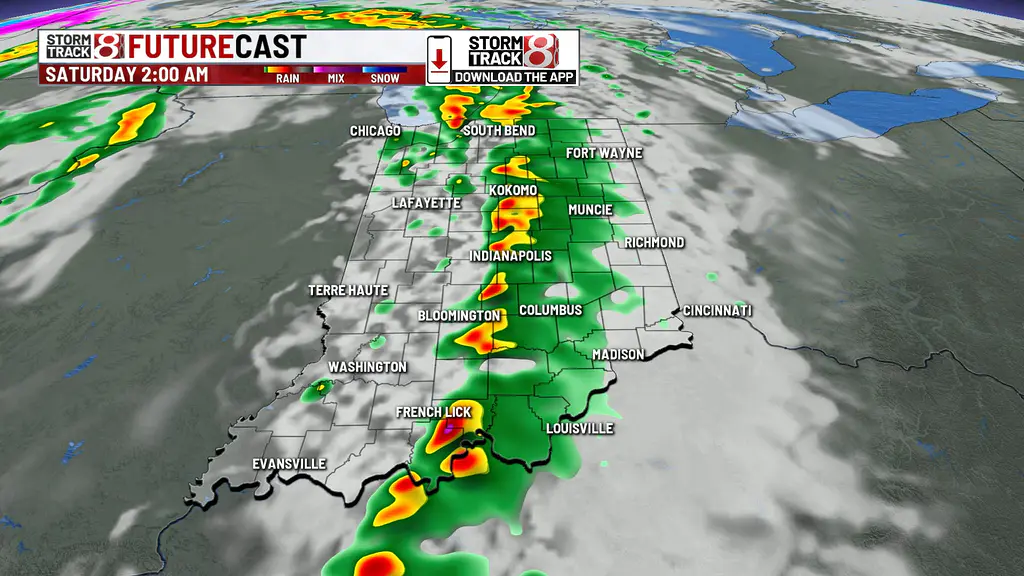
Indianapolis Weather: A Comprehensive Guide to Navigating the Seasons
Indianapolis, Indiana, experiences a humid continental climate, characterized by four distinct seasons. Understanding the nuances of Indianapolis weather is crucial for residents and visitors alike. This guide provides a detailed overview of what to expect throughout the year, offering insights into temperature ranges, precipitation patterns, and potential extreme weather events. Whether you’re planning a trip or simply want to be prepared, this comprehensive analysis will help you navigate the Indianapolis weather landscape.
Understanding Indianapolis’s Climate
Indianapolis’s climate is defined by hot, humid summers and cold, snowy winters. The transition between seasons can be abrupt, with significant temperature swings. The city’s location in the Midwest exposes it to air masses from both the Arctic and the Gulf of Mexico, leading to variable weather conditions. [See also: Indiana’s Climate Zones]
Seasonal Breakdown
Let’s delve into each season to understand what Indianapolis weather typically entails.
Spring (March – May)
Spring in Indianapolis is a period of transition, with temperatures gradually warming from the chill of winter. However, it’s also a time of unpredictable weather. Early spring can still bring snow and freezing temperatures, while late spring can see warm, sunny days. Average temperatures range from the low 40s to the mid-60s Fahrenheit. Rainfall is common, and thunderstorms are possible, especially in May. Keep an eye on the weather forecast during this period.
- Average Temperature: 40°F – 65°F
- Precipitation: Moderate
- Potential Hazards: Thunderstorms, late-season snow
Summer (June – August)
Summers in Indianapolis are hot and humid. Temperatures frequently reach the 80s and 90s Fahrenheit, with high humidity levels making it feel even warmer. July is typically the hottest month. Thunderstorms are common, and the city can experience occasional heat waves. Air quality can also be a concern during the summer months. Staying hydrated and taking precautions against heat exhaustion are essential. Make sure to check the weather daily.
- Average Temperature: 70°F – 90°F
- Precipitation: High
- Potential Hazards: Heat waves, thunderstorms, high humidity
Autumn (September – November)
Autumn brings cooler temperatures and vibrant foliage to Indianapolis. The weather is generally pleasant, with sunny days and crisp evenings. Temperatures gradually decrease from the 70s in September to the 40s in November. Rainfall is moderate, and the risk of thunderstorms diminishes. However, early frosts are possible, especially in late October and November. This is a great time to enjoy outdoor activities before the cold weather sets in. The weather can shift quickly though.
- Average Temperature: 40°F – 70°F
- Precipitation: Moderate
- Potential Hazards: Early frosts
Winter (December – February)
Winters in Indianapolis are cold and snowy. Temperatures frequently drop below freezing, and snowfall is common. January is typically the coldest month. Blizzards and ice storms are possible, which can disrupt travel and daily life. Wind chill can also be a significant factor, making the weather feel even colder. Dressing in layers and taking precautions against frostbite are essential. Staying informed about weather alerts is crucial during the winter months. The Indianapolis weather in winter can be quite severe.
- Average Temperature: 20°F – 40°F
- Precipitation: High (snow)
- Potential Hazards: Blizzards, ice storms, extreme cold, wind chill
Preparing for Extreme Weather in Indianapolis
Indianapolis is susceptible to various extreme weather events. Being prepared can significantly mitigate the impact of these events.
Severe Thunderstorms
Severe thunderstorms can bring strong winds, heavy rain, and hail. Tornadoes are also possible. It’s essential to have a plan in place in case of a severe thunderstorm warning. Seek shelter indoors, away from windows. Stay informed about weather updates through local news or a NOAA weather radio. [See also: Tornado Safety Tips]
Heat Waves
During heat waves, temperatures can soar to dangerous levels. Stay hydrated, avoid strenuous activities, and seek air-conditioned environments. Check on elderly neighbors and family members who may be more vulnerable to heat-related illnesses. The weather during a heatwave can be deadly.
Blizzards and Ice Storms
Blizzards and ice storms can create hazardous travel conditions. Stock up on essential supplies, such as food, water, and medication. Avoid unnecessary travel. If you must travel, ensure your vehicle is properly equipped for winter weather. Have a weather emergency kit in your car.
Staying Informed About Indianapolis Weather
Staying informed about the current and future weather conditions is crucial for making informed decisions. There are several resources available to help you stay updated.
- Local News Channels: Local news channels provide regular weather forecasts and alerts.
- NOAA Weather Radio: A NOAA Weather Radio provides continuous weather information and alerts.
- Weather Apps: Numerous weather apps are available for smartphones, providing real-time weather updates and forecasts.
- Online Weather Websites: Websites like the National Weather Service and AccuWeather offer detailed weather information for Indianapolis.
The Impact of Climate Change on Indianapolis Weather
Climate change is expected to have a significant impact on Indianapolis weather patterns. Warmer temperatures, more frequent heat waves, and changes in precipitation patterns are all anticipated. Understanding these changes is crucial for developing strategies to mitigate their impact. [See also: Climate Change in Indiana]
Projected Changes
Climate models project that Indianapolis will experience:
- Increased average temperatures
- More frequent and intense heat waves
- Changes in precipitation patterns, with potentially heavier rainfall events
- Increased risk of flooding
Conclusion
Indianapolis weather is characterized by four distinct seasons, each with its own unique challenges and opportunities. By understanding the nuances of the city’s climate and staying informed about potential extreme weather events, residents and visitors can be well-prepared for whatever Mother Nature throws their way. The key is to be proactive, stay informed, and take appropriate precautions. Knowing the weather in Indianapolis is crucial for safety and comfort.
